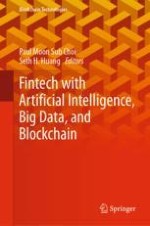2021 | OriginalPaper | Chapter
Application of Big Data with Fintech in Financial Services
Authors : Joseph Bamidele Awotunde, Emmanuel Abidemi Adeniyi, Roseline Oluwaseun Ogundokun, Femi Emmanuel Ayo
Published in: Fintech with Artificial Intelligence, Big Data, and Blockchain
Publisher: Springer Singapore
Activate our intelligent search to find suitable subject content or patents.
Select sections of text to find matching patents with Artificial Intelligence. powered by
Select sections of text to find additional relevant content using AI-assisted search. powered by
